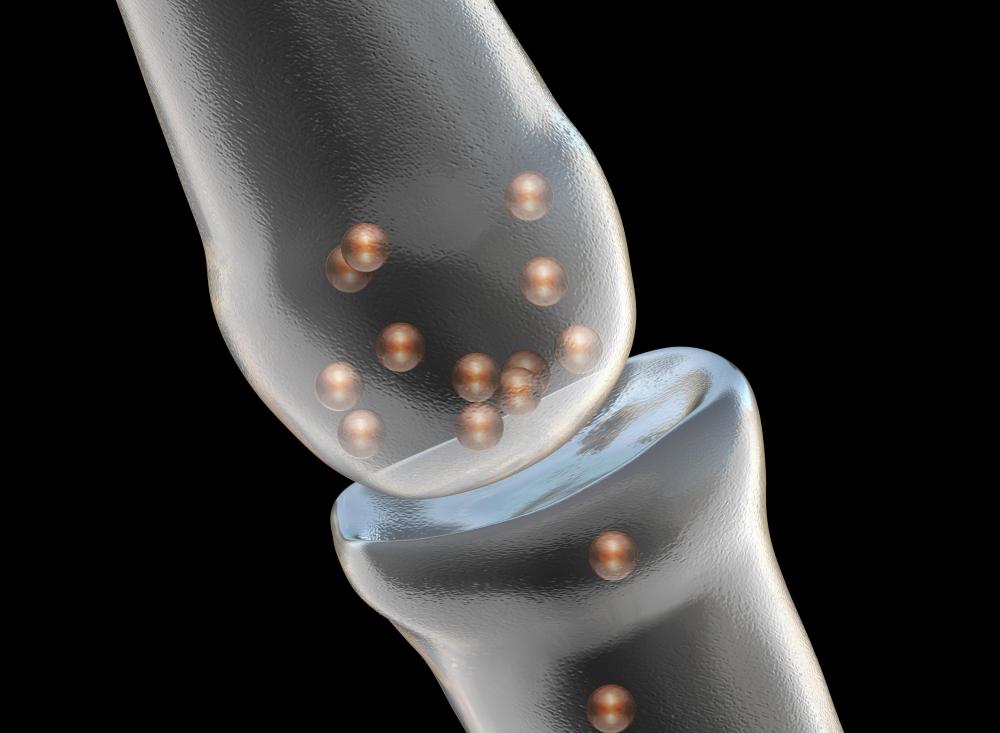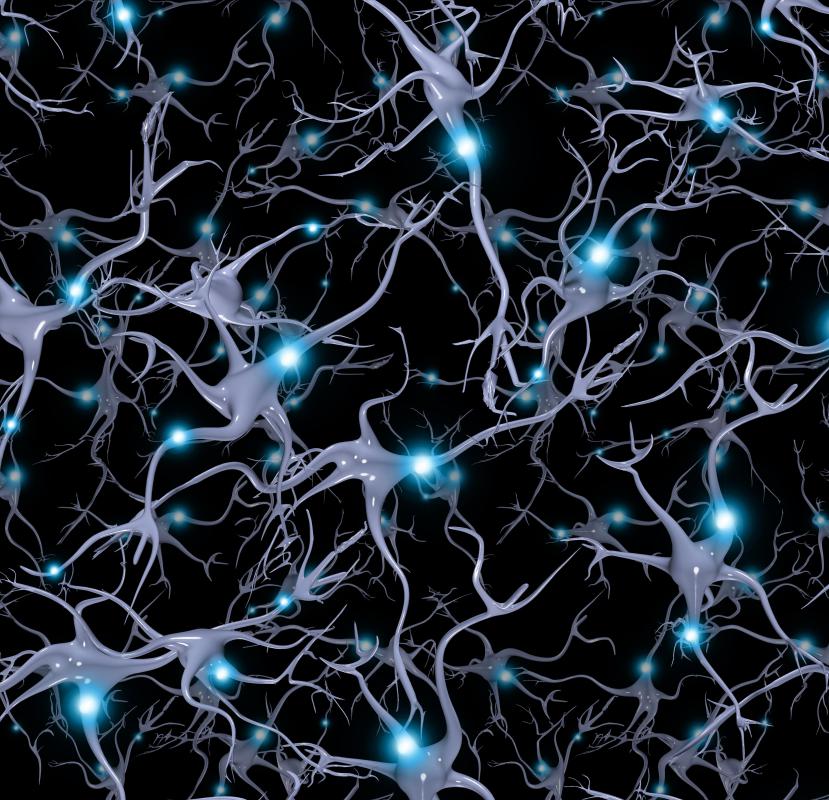At TheHealthBoard, we're committed to delivering accurate, trustworthy information. Our expert-authored content is rigorously fact-checked and sourced from credible authorities. Discover how we uphold the highest standards in providing you with reliable knowledge.
What is a Synapse?
A synapse is a connection which allows for the transmission of nerve impulses. Synapses can be found at the points where nerve cells meet other nerve cells, and where nerve cells interface with glandular and muscular cells. In all cases, this connection allows for the one-way movement of data. The human body contains trillions of these connections, and at any given time, huge numbers of these connections are active.
Understanding the anatomy of a nerve cell can be helpful when learning about synapses. Each nerve cell consists of a cell body, with attached axons and dendrites. These branching structures carry information to and from the cell body. Dendrites bring information in, with the use of receptors on their tips which collect information from other cells. Axons bring information away by sending signals across the synapse between the nerve cell and another cell.

In most cases, the connection is chemical, which means that neurotransmitters are passed along the connection, in contrast with an electrical synapse, in which electrical signals are transmitted. In the case of a chemical synapse, the chemicals are released by the vesicles on the ends of the axons of a nerve cell. These vesicles open in response to signals which enter the nerve cell through its dendrites, and the opening results in the release of neurotransmitters which connect with receptors on the destination cell.

Chemical synapses take the form of a structure called the synaptic cleft, which is actually a tiny gap between the cells, while electrical synapses involve cell to cell contact for the purpose of transmitting data. The speed at which impulses travel across the connections can vary, depending on the cell and the type of signals. Once the neurotransmitter has moved across the connection, it is broken down by enzymes to ensure that the signal is only transmitted once, and to clear the way for the next neurotransmitter.

Synapses can carry a wide assortment of types of information, ranging from a message from the brain to do something to a signal from an extremity to alert the brain to an ongoing situation. Neurons are very responsive to sensory input, and they can send back information about sensory input to the brain at remarkable speeds. The neurons within the brain can also rapidly process and shuffle information so that the brain can respond in the fraction of a second, sometimes before the brain's owner is even consciously aware of an event.
AS FEATURED ON:
AS FEATURED ON:














Discussion Comments
Our five senses are not the only senses we really have, they are just the ones that we are most immediately aware of. As we delve deeper into the brain, we also recognize that there are specific senses for various types of deeper feeling that we have. These can be quite empathetic, and tie us all together in the collective unconscious.
Intuition seems to occur at light speed. When someone suddenly has a new idea, he says he has an "epiphany" or is struck by lightning. The truth is actually very similar. When an electrical signal is transmitted from a synapse, there is an electrical current which makes a sudden assumption or connection that is often beyond us to comprehend. This is why the process of genius ideas are often inexplicable.
I think that the function of the brain will continue to intrigue us as we learn more and more. Although we have come to have a decent grasp on space, the infinite, and atoms, the infinitesimal, we are still very far from understanding ourselves. Psychology and science interact intimiately on the level of consciousness and chemicals in the human mind.
The function of synapses is designed sort of like a virus. It is a vast interconnected network of signals which respond at light speed to small signals. The faster the signal is transmitted, the better the brain. This electrochemical process is still being studied extensively. So far, we only truly understand that we can roughly connect certain brain functions to certain areas of the brain based on our MRI images of blood usage in those areas.
Post your comments